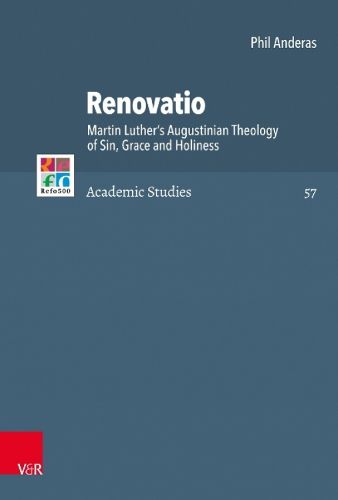Readings Newsletter
Become a Readings Member to make your shopping experience even easier.
Sign in or sign up for free!
You’re not far away from qualifying for FREE standard shipping within Australia
You’ve qualified for FREE standard shipping within Australia
The cart is loading…






Much mainstream Luther scholarship (and Lutheran theology) holds that Martin Luther downplayed, denied, derided, or just plain ignored the holiness without which no one shall see the Lord (Heb. 12:14). Phil Anderas advances a revisionist thesis: from the first inklings of his Augustinian turn c. 1514 to his death in 1546, Luther held and taught a robust theology of progressive renewal in holiness, carefully calibrated to the sober reality of residual sin and the astonishing gospel of grace in Jesus Christ. As it is set forth in the works that embody Luther’s most considered judgments (c. 1535-46), this gospel-centered and irreducibly trinitarian dogmatics of real renewal in holiness is Augustinian and evangelical in equal parts. As such, it commands the regard of theologians who stand in the tradition of the Church’s doctor gratiae. The argument proceeds in three steps: first, an exposition of the mature Luther’s dogmatics of sin, grace, and holiness; second, an investigation of the roots of this dogmatics in the theology of the 420s Augustine, with whom a younger Luther was busily engaged c. 1514-16; third, an account of the continuities and discontinuities that characterize the development of Luther’s theology from its embryonic state in the mid-1510s through the breakthroughs of the 1518-21 period to the settled position of the old Doctor.
$9.00 standard shipping within Australia
FREE standard shipping within Australia for orders over $100.00
Express & International shipping calculated at checkout
Much mainstream Luther scholarship (and Lutheran theology) holds that Martin Luther downplayed, denied, derided, or just plain ignored the holiness without which no one shall see the Lord (Heb. 12:14). Phil Anderas advances a revisionist thesis: from the first inklings of his Augustinian turn c. 1514 to his death in 1546, Luther held and taught a robust theology of progressive renewal in holiness, carefully calibrated to the sober reality of residual sin and the astonishing gospel of grace in Jesus Christ. As it is set forth in the works that embody Luther’s most considered judgments (c. 1535-46), this gospel-centered and irreducibly trinitarian dogmatics of real renewal in holiness is Augustinian and evangelical in equal parts. As such, it commands the regard of theologians who stand in the tradition of the Church’s doctor gratiae. The argument proceeds in three steps: first, an exposition of the mature Luther’s dogmatics of sin, grace, and holiness; second, an investigation of the roots of this dogmatics in the theology of the 420s Augustine, with whom a younger Luther was busily engaged c. 1514-16; third, an account of the continuities and discontinuities that characterize the development of Luther’s theology from its embryonic state in the mid-1510s through the breakthroughs of the 1518-21 period to the settled position of the old Doctor.